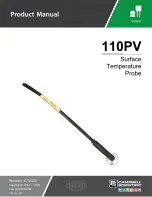
couple onto the negative signal because that signal is connected to ground. This noise appears
as a differential mode signal instead of a common-mode signal, and thus appears in your data.
In this case, instead of directly connecting the negative signal to AI GND, connect the
negative signal to AI GND through a resistor that is about 100 times the equivalent source
impedance, as shown in the following figure. The resistor puts the signal path nearly in
balance, so that about the same amount of noise couples onto both connections, yielding better
rejection of electrostatically coupled noise. This configuration does not load down the source
(other than the very high input impedance of the PGIA).
Figure 27. Differential Connections for Floating Signal Sources with Single Bias Resistor
–
+
R is about
100 times
source
impedance
of sensor
AI GND
R
V
s
Floating
Signal
Source
AI+
AI–
You can fully balance the signal path by connecting another resistor of the same value between
the positive input and AI GND, as shown in the following figure. This fully balanced
configuration offers slightly better noise rejection, but has the disadvantage of loading the
source down with the series combination (sum) of the two resistors. If, for example, the source
impedance is 2 kΩ and each of the two resistors is 100 kΩ, the resistors load down the source
with 200 kΩ and produce a -1% gain error.
NI sbRIO-9637 User Manual
|
© National Instruments
|
35
Artisan Technology Group - Quality Instrumentation ... Guaranteed | (888) 88-SOURCE | www.artisantg.com













































